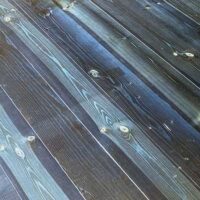 A subfloor is the foundation layer for a floor in a home. It is the layer of wood or concrete that sits on top of the joists and provides a base for the finished flooring material. Subfloors need to be level and sturdy in order to ensure the longevity and stability of the finished flooring. In this article, we will discuss how to repair and seal a subfloor to ensure that it is in good condition.
A subfloor is the foundation layer for a floor in a home. It is the layer of wood or concrete that sits on top of the joists and provides a base for the finished flooring material. Subfloors need to be level and sturdy in order to ensure the longevity and stability of the finished flooring. In this article, we will discuss how to repair and seal a subfloor to ensure that it is in good condition.
Repairing and waterproofing a basement subfloor typically involves fixing any areas that are damaged, rotted, or not level. Some common issues that can be found on a subfloor include:
- Rotten or soft spots in the wood caused by water damage.
- Holes, gaps, or cracks that have formed in the subfloor.
- Areas that are not level, which can cause problems with the installation of the finished flooring.
To repair these issues, you will need to remove damaged or rotted wood, fill gaps or holes, and level any uneven areas.
First, you will need to locate any areas of damage on the subfloor. Use a sharp tool such as a chisel or screwdriver to probe the subfloor and locate any soft or spongy spots. Next, remove any damaged or rotten wood using a saw or chisel. Be sure to cut away all of the damaged wood until you reach solid, stable wood.
Once the damaged wood has been removed, you will need to fill any gaps or holes that have been exposed. You can use wood filler to do this. Allow the wood filler to dry completely according to the manufacturer’s instructions, usually between 24-48 hours, then sand it smooth.
To level, the subfloor, use a self-leveling compound. Pour the compound onto the subfloor and spread it evenly using a flat trowel. This will fill in any low spots and level out the subfloor. Allow the self-leveling compound to dry completely according to the manufacturer’s instructions, usually at least 24 hours.
After the repair process is done, the next step is to seal the subfloor.
Sealing and waterproofing a wood subfloor is an important step in protecting it from moisture and other types of damage. You can seal a subfloor using a sealant specifically designed for subfloors, such as a penetrating sealer or a moisture barrier.
- Penetrating sealers are typically made from a wax or oil-based formula that soaks into the wood, protecting it from moisture and rot. Apply the sealer according to the manufacturer’s instructions, and be sure to cover the entire surface of the subfloor.
- A moisture barrier is typically a roll of plastic material that is laid over the subfloor before the finished flooring is installed. This barrier acts as a barrier between the subfloor and the finished flooring, protecting the subfloor from moisture.
To summarize, repairing and sealing your subfloor is an important step in ensuring that your finished flooring lasts for many years. Locate and remove any damaged or rotten wood, fill any gaps or holes and level any uneven areas with a self-leveling compound, and seal the subfloor using a sealant specifically designed for subfloors or a moisture barrier to protect it from moisture and other types of damage.
SANI-TRED waterproofing products can be used to waterproof subfloors, foundations, basements, floor and more. Not sure about your application call our experts today for help.
